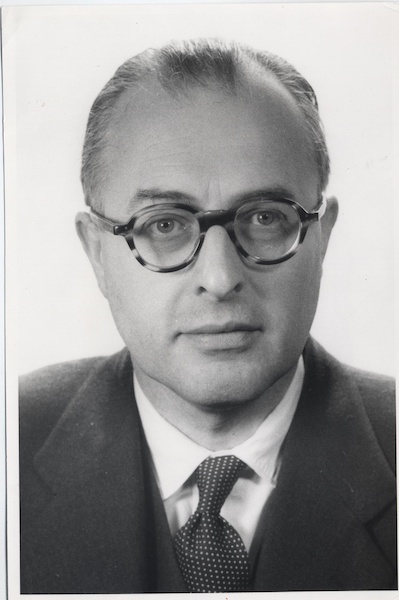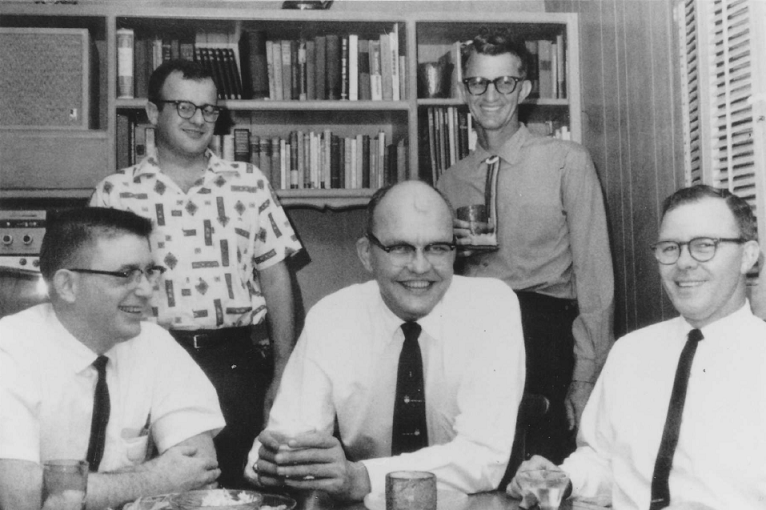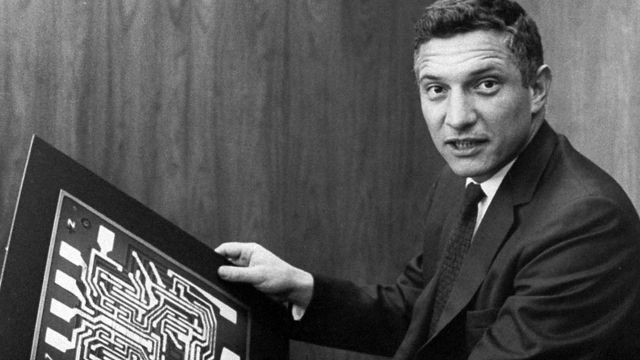
The year is 1952: The concept of the integrated circuit has just been introduced, and the heart of modern electronics is about to change forever…
The Start of a Microelectronics Revolution
During the 1940s and 50s, transistors, used to amplify, control, or produce electrical signals, were considered the foundation of electronics. However, as technology advanced, electronics got smaller, and transistors weren’t compact enough to fit into these miniature devices. This problem led to a new wave of inventors and engineers who were invested in finding a solution.
One such engineer was Geoffrey Dummer, who worked on radar systems at the Telecommunications Research Establishment (TRE) in the United Kingdom, now called the Royal Radar Establishment. While working on radar, he gained a strong appreciation for their construction and the reliability of their components. Through his research, he learned a lot of failures in electronics were due to faulty wires or solder joints linking the various components in a circuit.
Dummer had a groundbreaking idea: a single board that could include every circuit element. He came up with the concept of the integrated circuit (IC), or microchip.

Photograph of Geoffrey Dummer. Image by Robert Cathles. Licensed under CC BY-SA 2.5, CC BY-SA 2.0, and CC BY-SA 1.0, via Wikimedia Commons.
Dummer presented this concept at a technical conference in Washington, D.C., on May 7, 1952. While introducing this radical concept, Dummer said:
“With the advent of the transistor and the work in semiconductors generally, it seems now possible to envisage electronics equipment in a solid block with no connecting wires. The block may consist of layers of insulating, conducting, rectifying and amplifying materials, the electronic functions being connected directly by cutting out areas of the various layers.”
Dummer got to work bringing his idea to life, but his attempts were halted when the British government stopped funding his project. Although he wasn’t able to successfully design a working integrated circuit, Dummer’s work helped pave the way for a microelectronics revolution.
Breakthroughs in Integrated Circuit Research
Engineers across the world quickly caught on to the concept of the integrated circuit and tried to build a functioning one themselves. However, designing the first practical IC turned out to be an extreme challenge because every component within the circuit had to work perfectly together.
In 1958, there was a milestone in integrated circuit research when engineer Jack Kilby discovered that all parts of an IC could be made out of semiconductor material. At the time, Kilby had just started working at Texas Instruments (TI) in Texas and wanted to impress his boss with an innovative idea. Little did he know that his finding would later become known as the Monolithic Idea, which can be found in a variety of popular textbooks.
That same year, Kilby turned his idea into the first working IC prototype, which consisted of several circuit components on a piece of germanium. Kilby’s new device was 1.6 x 11.1 mm — making it smaller than a United States postage stamp! In 1959, he filed a patent, which read, “This invention relates to miniature electronic circuits, and more particularly to unique integrated electronic circuits fabricated from semiconductor material.”

Texas Instruments engineers in Dallas, TX, in the early 1960s. From left to right: Charles Phipps and Joe Weaver (standing), James R. Biard, Jack Kilby, and James Fischer (seated). Image by James R. Biard — Own work. Licensed under CC BY-SA 4.0, via Wikimedia Commons.
Like Kilby, engineer Robert Noyce also saw the importance of manufacturing an entire circuit all on one chip. Their work was similar, but not identical. Kilby was trying to perfect the components in an integrated circuit, while Noyce was thinking of the best possible way to connect all of its parts. Noyce conducted his research at Fairchild Semiconductor in California, a semiconductor company he cofounded in 1957.
Noyce wrote a highly detailed patent for a silicon-based integrated circuit, ensuring not to infringe on Kilby’s closely related device. Although Noyce wrote his IC patent after Kilby, it was actually granted in 1961 (Kilby’s was granted in 1964).

Photograph of Robert Noyce. Image by Intel Free Press. Licensed under CC BY-SA 2.0, via Flickr Creative Commons.
Today, both Kilby and Noyce are credited for the discovery of the first working integrated circuit. There’s even a book about their combined finding titled The Chip: How Two Americans Invented the Microchip and Launched a Revolution (1984), written by T.R. Reid. After his work at Fairchild Semiconductor, Noyce went on to cofound another semiconductor manufacturing company, Intel (both of these companies played a major role in the establishment of Silicon Valley). Kilby’s passion for innovation followed him throughout his life, which led him to coinvent the handheld calculator and thermal printer. In 2000, Kilby earned the Nobel Prize in Physics for his role in the invention of the integrated circuit.
The Lasting Legacy of the Integrated Circuit
A little over 60 years later, the integrated circuit can be found in almost every electronic device, from smartwatches to mobile phones to televisions. When compared to the first commercially available integrated circuits, priced at $450 USD, microchips today cost one-hundredth as much — and they’re a lot more advanced.
Forward-thinking and bold innovators like Dummer, Kilby, and Noyce have helped shaped the tech-savvy and constantly changing world we live in today.
Further Reading
Learn more about integrated circuits on the COMSOL Blog:
- Integrated Circuit Design and the Photolithography Process: Photolithography is the process used for manufacturing integrated circuits, and it involves the etching of a semiconductor wafer on which an integrated circuit is made
- How to Model Wet Chemical Etching in COMSOL®: Wet chemical etching is used in the industrial production of integrated circuits




Comments (0)